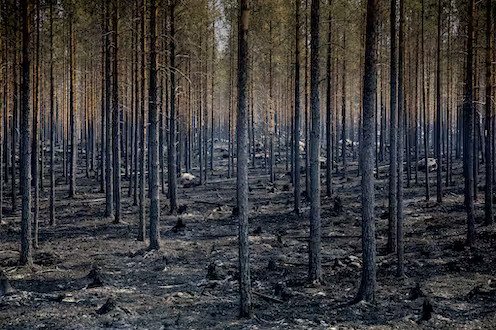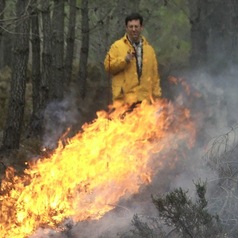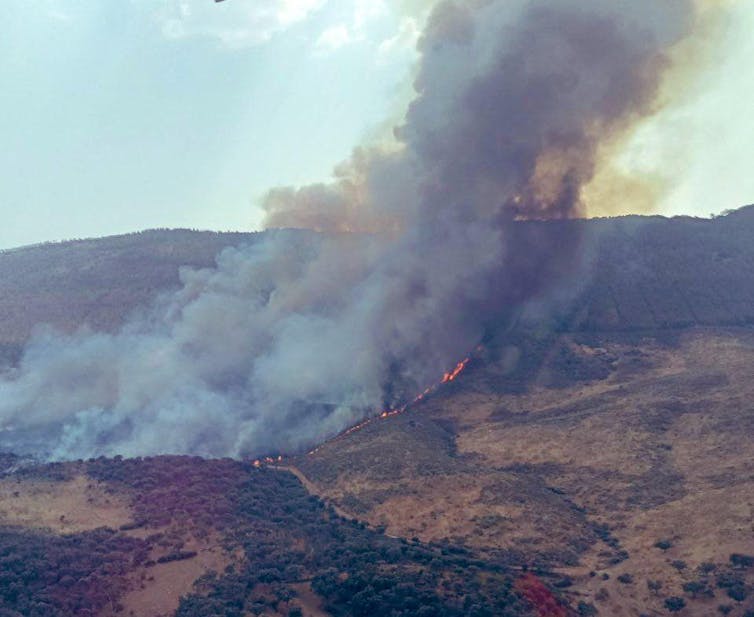The last embers of 2022 fire season are finally extinguished, but the coming year’s mega-fires are also already sprouting. Although they are not making headlines now, the fires to come are quietly gestating: fuel continues to grow and, as soon as the weather allows it, they will strike again with renewed vigour.
This summer in southwest Europe, the figures have been overwhelming: more than 80,000 people evacuated, around 460,000 hectares burnt, a huge but unknown number of houses and farms destroyed and, worst of all, five casualties.
We have published the first study that examines both the causes and consequences of this year’s fire campaign in southwest Europe, in order to prevent future misfortunes. The results suggest that we need to change our understanding and interaction with forests.
Protected areas: victims and executioners
Our analysis reveals that the first thing we need to review is how we are managing protected areas, spaces such as national or natural parks.
Half of the burned surface has been located inside protected areas. This indicates that those are the big victims of forest fires.
The large proportion of burned area in protected areas also suggests that fires may be burning in those areas preferentially. In other words, the current management of some protected areas, by not providing integrated fire prevention, could lead to particularly flammable vegetation types.
This is not surprising. Vegetation is often fire-adapted and, when unmanaged, high intensity fires can naturally occur.
For example, one of the world’s largest ever fires took place in a national park: 321,300 hectares burned in a single fire in Yellowstone, USA, in 1988.
In fact, the largest fires have burned such emblematic areas as the Sierra de la Culebra and Monfragüe National Park in Spain, Serra da Estrela in Portugal and the Landes de Gascogne in France.
Although people and rural economies have been the main victims, fires encourage rural abandonment. This, in turn, leads to the increase of undergrowth – the perfect fuel – and a vicious circle that ends in large fires.
Fire in Monfragüe National Park in the province of Cáceres (Spain) Francisco Castañares, Author provided
Plantations: profitable forests also burn
Forest management has been defended as the best tool to prevent fires. The paradigm that profitable forest does not burn has been used on several occasions to explain, for example, why fires are rare in Soria (a region in Spain).
However, past records have been broken this year for the area burnt in Aquitaine (France), an area where productive maritime pine plantations abound. There, the area burnt was 52 times higher than the long-term average.
The vaccine against fires is not in forest management per se, but in fuel management. Because fires spread mainly through undergrowth, we must try to keep shrub and litter loads below the thresholds associated with high intensity fires.
Classical forest management, understood as the regulation of tree density, is necessary to reduce the probability of crown fires, but is not sufficient to reduce the main fuel.
The type of vegetation that has burnt most this year is precisely the shrub, due to its high fuel load. The second type to burn the most have been pine forests, whether natural or from reforestation.
Climate change: catalyst for fires
We must abandon also the idea that the current fires are caused by climate change. This year has seen record-breaking temperatures due to a concatenation of heat waves. Our results indicate that the fuel (i.e. leaf) moisture values have been below historical minimums during almost 50% of the summer in some regions.
In addition, climate models tell us that this year’s temperature will be the average from 2035 onwards. In other words, what we have experienced this year is only a preview of the new normal that is to come.
Climate change is therefore a catalyst, an accelerator of the problem of forest fires. It acts on a substrate, which is the state of fuels. Climate change imposes greater urgency on the need for fuel management to reduce the risk of future mega-fires.
Implications at European level
Beyond southwest Europe, this year we’ve seen very high levels of fire activity in many Central and Eastern European countries, including Germany, Romania and Hungary. The fire problem is no longer circumscribed to the Mediterranean Arc, as it is now a pan-european issue.
The European Union is currently developing a series of laws and strategies for the implementation of the European Green Deal. Chief among these is the Nature Restoration Law, whose proposal was approved in June. The current text proposes to increase the concentration of dead fuels in forests, the spatial continuity of fuels and undergrowth cover. From the perspective of fire risk, these are the ingredients for the perfect storm.
Wildfires can no longer be added as a simple tag line in EU’s forest strategies and legislation. We recommend that wildfire prevention plays a central role within forest policies at continental scale so we can adapt to the new reality. Otherwise, the Green Deal may just fuel the megafire problem.



 Asian Fund Managers Turn More Optimistic on Growth but Curb Equity Return Expectations: BofA Survey
Asian Fund Managers Turn More Optimistic on Growth but Curb Equity Return Expectations: BofA Survey  Fed Near Neutral Signals Caution Ahead, Shifting Focus to Fixed Income in 2026
Fed Near Neutral Signals Caution Ahead, Shifting Focus to Fixed Income in 2026  Robinhood Expands Sports Event Contracts With Player Performance Wagers
Robinhood Expands Sports Event Contracts With Player Performance Wagers 





































